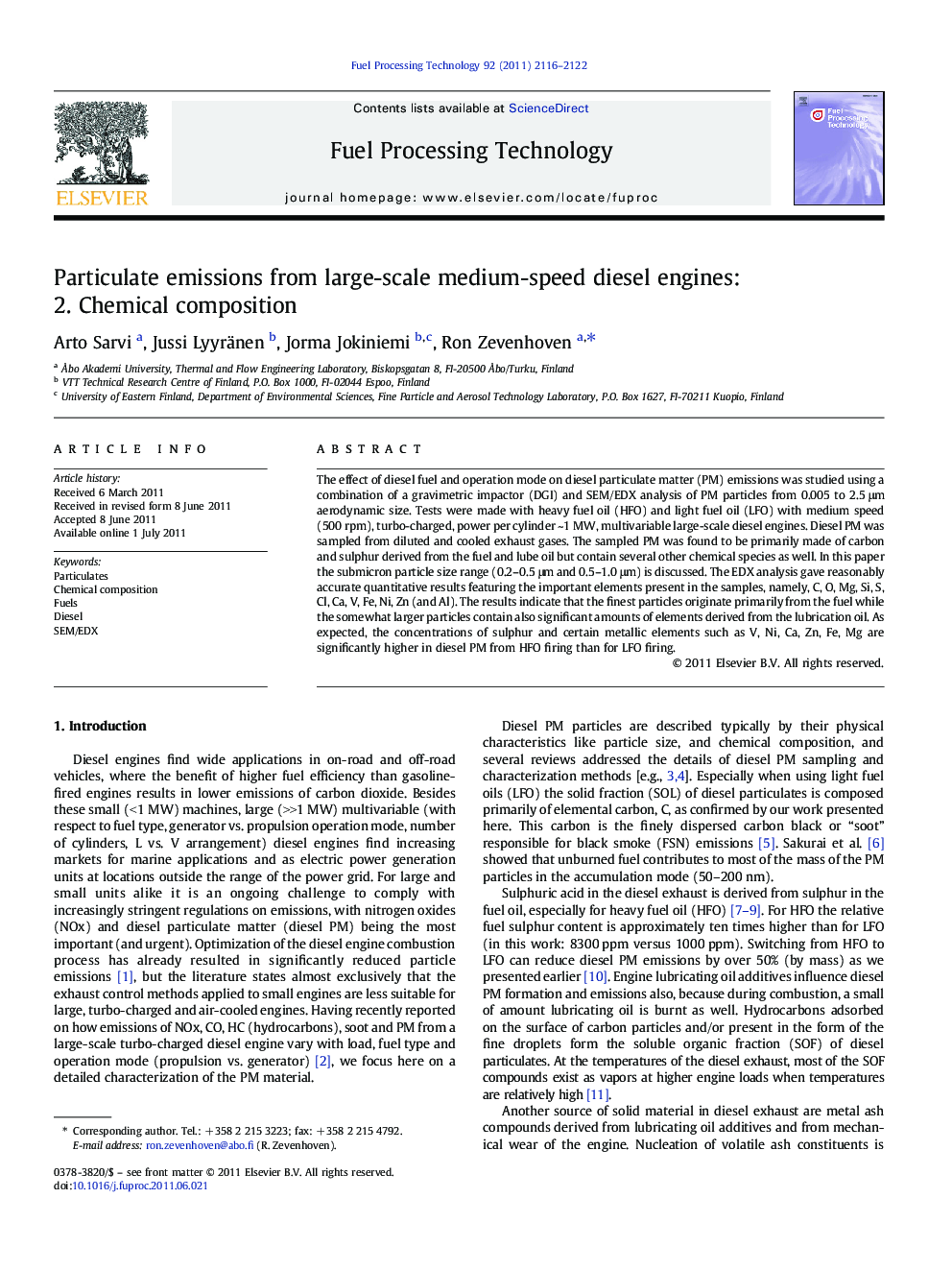| Article ID | Journal | Published Year | Pages | File Type |
|---|---|---|---|---|
| 210599 | Fuel Processing Technology | 2011 | 7 Pages |
The effect of diesel fuel and operation mode on diesel particulate matter (PM) emissions was studied using a combination of a gravimetric impactor (DGI) and SEM/EDX analysis of PM particles from 0.005 to 2.5 μm aerodynamic size. Tests were made with heavy fuel oil (HFO) and light fuel oil (LFO) with medium speed (500 rpm), turbo-charged, power per cylinder ~1 MW, multivariable large-scale diesel engines. Diesel PM was sampled from diluted and cooled exhaust gases. The sampled PM was found to be primarily made of carbon and sulphur derived from the fuel and lube oil but contain several other chemical species as well. In this paper the submicron particle size range (0.2–0.5 μm and 0.5–1.0 μm) is discussed. The EDX analysis gave reasonably accurate quantitative results featuring the important elements present in the samples, namely, C, O, Mg, Si, S, Cl, Ca, V, Fe, Ni, Zn (and Al). The results indicate that the finest particles originate primarily from the fuel while the somewhat larger particles contain also significant amounts of elements derived from the lubrication oil. As expected, the concentrations of sulphur and certain metallic elements such as V, Ni, Ca, Zn, Fe, Mg are significantly higher in diesel PM from HFO firing than for LFO firing.
► Chemical composition data is given for PM sampled from large-scale diesel engine exhaust ► Important differences for different fuel (LFO vs. HFO) and varying engine load were found ► Sulphur and metallic matter content of fuel and lubricant oil affect PM emissions ► Different elements end up in different size fractions
